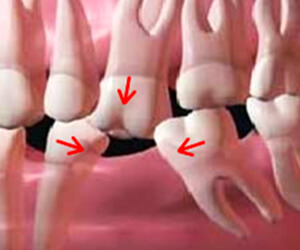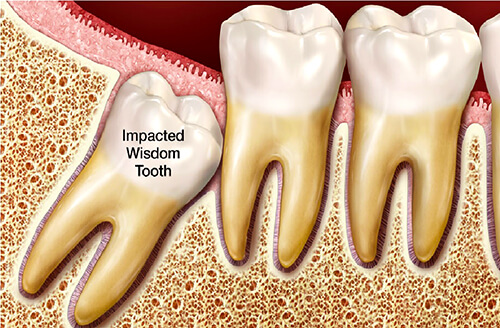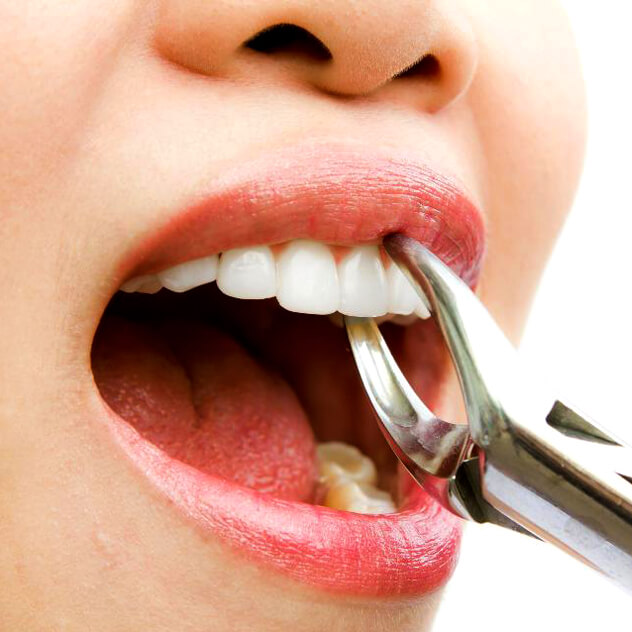PAINLESS TOOTH EXTRACTION
Although every effort is made to save a tooth, it is often necessary to recommend extraction. One of the first concerns when discussing tooth extraction is usually the pain associated with the procedure while in the office. Local anaesthesia has made dental extraction a painless procedure.
WHEN SHOULD A TOOTH EXTRACTION BE AN OPTION?
A dentist may opt to pull a tooth for many reasons. The tooth may be so hopelessly damaged from tooth decay that it cannot be saved even with root canal therapy. It may be causing crowding or malocclusion (bad bite) which may prevent a new tooth from breaking through. Or, the tooth may be loose as a result of gum disease or even from an accident.
HOW IS A TOOTH EXTRACTION DONE?
In a simple tooth extraction a dentist takes hold of the tooth with forceps and rocks it back and forth to loosen it from the bone. Removal of the overlying gum might be necessary if a tooth is not quite through the gum. After a tooth extraction, a blood clot forms where a tooth had once been. It is important not to dislodge the blood clot because it aids in healing. Disturbing the clot can result in a dry socket — a painful condition that may or may not heal by itself. Some swelling and light bleeding may occur over the next 24 hours.
WHAT ARE THE CONSEQUENCES OF TOOTH EXTRACTION?

A missing tooth leaves a large enough gap for other teeth to shift. You may also have difficulty chewing and may experience a problem with malocclusion (bad bite). These difficulties can be alleviated with dental implants, fixed bridges or dentures.
IMPACTED WISDOM TOOTH

Wisdom teeth or third molars often are impacted. Wisdom teeth usually begin to come in between the ages of 17 and 21. Dentists call these teeth third molars. They may become impacted because there’s not enough room in your mouth for them. A wisdom tooth also might be trying to come in sideways. Or, it might be tilted in your jaw.
An impacted tooth can be painless. You may not even realize it’s there. However, when an impacted wisdom tooth tries to come in, the flap of gum on top of it can swell. This can hurt. You might feel pain in nearby teeth, or in the ear on that side of your face. Plus, food particles can get stuck near the gum flap. This can lead to an infection called pericoronitis or operculitis. If untreated, this infection can spread to the throat or into the neck.
Impacted teeth can get cavities. An impacted tooth can push on the neighboring molar. This can lead to tooth movement, decay or gum disease. It also can change the way your teeth come together. Rarely, impacted teeth can cause cysts or other growths in the jaw.

